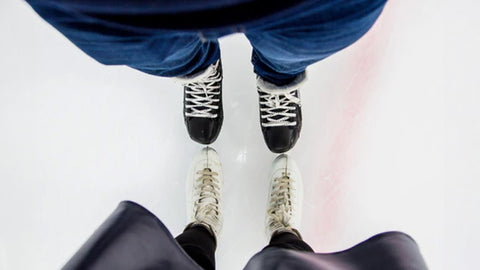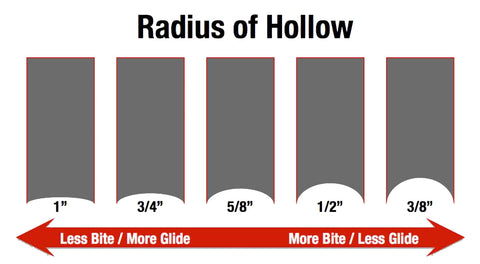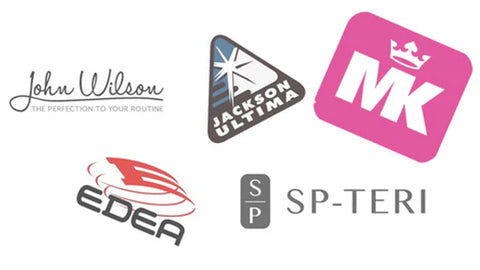10 Tips To Find The Best Ice Skating Blades At Any Budget
You've been participating in ice sports for some time now.
Whether you've been figure skating or playing hockey, you love what you do, and now, you're looking for ways to improve.
One of the best ways to improve on the ice is to invest in the best ice-skating blades you can find.
It varies between most brands and models, but for most ice skates (except the cheaper ones), you can swap out the blades for a new pair.
Why should you do that, you may ask?
Blades, like any tool used for sport, can suffer from wear and tear.
PRACTICE ON YOUR NEW BLADES AT HOME WITH POLYGLIDE SYNTHETIC ICE

You Should Consider Swapping Out Your Blades
Your skating may not be as fast or efficient as you might think, all because your blades are nicked, rusted, or bent.
Blades last for several years but can lose their luster depending on how often you skate.
Even the slightest imperfections can be unsafe and limit your performance.
Sometimes, sharpening does not feel right, and the blades lose their edge.
More importantly, you're getting better.
You may need new blades to match your capabilities.
Beginner skaters prioritize stability.
As you advance, you probably want to go faster or have more control in tight situations.
An advanced pair of ice-skating blades can do that.
Best of all, the ice skating world, like most others, is constantly changing.
There are new production techniques, new materials, and features that you want to try out just for the hell of it.
The best figure skaters and hockey players don't just buy entirely new ice skates.
They also mix and match boots and blades for the optimal fit and performance.

The Anatomy of the Best Ice Skating Blades
So what's the big deal?
It's just a sharp piece of metal that cuts through the ice and allows you to move, right?
Wrong.
This metal is made up of multiple components that come together to form the perfect tool for ice skating.
The blade design also differs from that of ice hockey and figure skating.
In short, the best ice skating blades are broken down into:
- Runner: The long, flat portion that makes contact with the ice. Runners are made of different types of metal, such as chrome-plated carbon steel.
- Toe Pick: The jagged tip at the front of the blade is used by figure skaters to initiate jumps and spins. Toe picks do not exist on hockey runners.
- Edge: The blade consists of two sides that run on the inside and outside of the runner. The edges are crucial for executing certain moves, stops, pushing off, and turning.
- Rocker: The curvature of the blade. When the blade is flat on the ice, how much of it is curved upward? It's a game of inches, but the blade's rocker impacts stability, maneuverability, and jump height. There are different types of rocker styles.
- Hollow: Ice skating blades have a small grove that's ground into the runner, giving it a concave appearance. The depth of the hollow impacts control and speed and can be adjusted with sharpening tools, but only for so long.
- Mounting System: How does the blade connect to the boot? Figure skates connect to the boot via a plate or removable mechanisms. With hockey skates, this mechanism even allows you to eject and change the blade seamlessly.
Now you know the blade's anatomy.
You'll notice that by manipulating the measurements of the blade, you can improve your performance!
When you're buying your new ice-skating blades, follow these tips to come out with the best pair possible.

1. Match the Blade to Your Discipline
You can pick up the wrong blade if you're not too careful.
Remember that each discipline has specific needs.
You can even get more granular, choosing blades for dance, freestyle, and more.
Research the best in each sub-niche.
2. Look for High-Quality Ice Skate Blade Material
Blades are usually made of carbon steel and chrome-plated.
You can explore other variants, like nickel and nickel-plated chrome.
There are new innovations in metal, so keep an eye out.
3. Stay Sharp on the Ice
You should not only look for a blade but a sharpener or sharpening process.
Invest in a good quality sharpener or find a reputable sharpening service to maintain the edge's bite into the ice.
4. Get the Right Profile
Blades have a profile, the natural lines from the rocker to the pick.
Choose a blade with a profile based on your current skill level and goals.
Your coach can help you choose and shape your profile.
5. Let's Get Boot Compatibility
The blade should install seamlessly with your boot.
Placing a $1000 blade on a $100 boot may not be possible as the boot may not have the capability to hold your blade.
If this is an issue, you'll also need to change your boot.

6. Rocker and Radius
Do you know some blades come with a double or combination radius?
You can have different depths at two parts of the runner.
There are new rocker and radius options that combine both stability and agility.
Research blades that give you this versatility and consider this in your purchase process.
7. The Weight is Over
Blades also come in different weights.
Lighter blades increase speed at the expense of control and vice versa.
What are you trying to achieve as you take your skills to the next level?
8. Versatility in Your Hollow
Your hollow impacts factors like speed, control, and turning.
Your blade comes with a standard hollow, but you want one that's versatile.
Get the type of hollow that helps you work with your skate sharpener to form the best one for you.
9. Get Exceptional Customer Support
Buying ice skating blades can be challenging.
Blades are also expensive.
You want a manufacturer that can answer questions, provide support, and help you get the right one for you.
Look at customer reviews to help you determine the best option.
10. Break it in Like a Pro
New, high-quality blades often have a "break-in" period where the edges become more receptive to sharpening.
What's the break-in period of your new blade?
Ask the retailer or determine the average break-in time for your brand of choice.

Common Brands and Price Points
- John Wilson: A long-time popular brand and gold standard known for high-quality blades used by many top figure skaters. Their blades can range from $500 to $1200+
- Edea: Arguably the luxury brand of boots. They also carry blades ranging from $500 to $1000+
- Jackson Ultima: Another popular brand offering a variety of blades for different disciplines and skill levels. Prices typically range from $200 to $800+ depending on the model.
- Wilson Coronation: A widely used blade known for its durability and performance. Coronation blades can range from $300 to $600+
- MK (Mitchell Kendall): MK has a variety of blades for figure skating, hockey, and recreational skating. Prices can vary from $150 to $500+ depending on the model.
- Riedell/Bauer/CCM: Your trusted hockey brands also carry individual runners. Blades typically range from $60 to $200+
- SP-Teri: A brand known for innovation and high-performance blades. Their blades can be on the pricier side, ranging from $400 to $1000+
Conclusion
The best ice skating blades ensure you get optimal performance on the ice.
Some you can change yourself.
Others you'll need to take to a skate shop.
You can even sharpen and mold them to your expectations.
Best of all, you'll have a spare that you can swap out based on the circumstances.
Blades are often overlooked, with skaters focusing on the comfort and performance of the boot.
However, the boot is one of the best ways to get an edge on the ice.
There are different brands and factors you need to consider.
But if you keep these tips in mind, you'll find the best ice-skating blades on any budget.
Here's some more interesting info on skates that may interest you!




